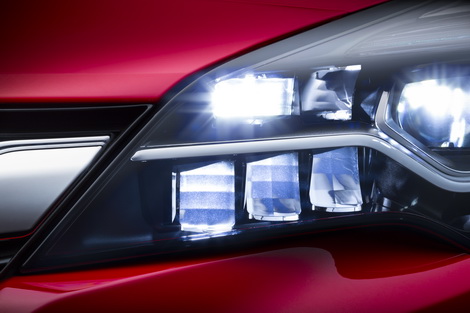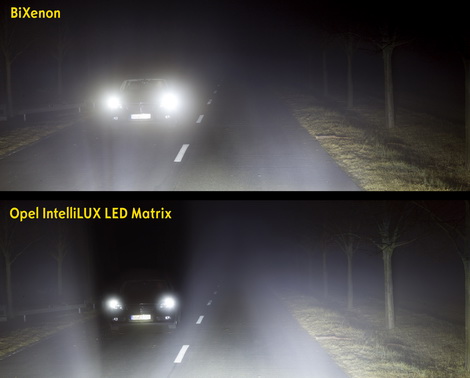The next generation Opel Astra will come with the option of IntelliLux self-dimming, LED matrix lights when it goes on sale this autumn. Lighting technology like this is usually found on premium cars and Opel claims this is a first time it has been seen on a C-segment vehicle.
Consisting of 16 LED segments - eight per side - the system constantly and automatically adjusts the length and distribution of the light beam. The 'Opel Eye' front camera detects approaching cars and switches off the segments that would dazzle oncoming drivers.
IntelliLux LED detects when the car leaves urban areas and automatically switches to high-beam. There is also a special motorway light mode for safer driving at speed. Most matrix light systems depend on a link to satellite navigation to know where they are, but Opel's is designed to operate without input from a navigation system.
According to a study by the Technical University of Darmstadt and the European LightSightSafety Initiative, LED matrix lights offer better visibility. The study found that at driving speeds of 80km/h, drivers detect objects at the side of the road around 30- to 40 metres sooner than with halogen or Xenon low-beam lighting. This equates to around 1.5 seconds more time to react.
Anything else?
As well as providing improved illumination, the LED matrix lights should last longer than halogen or Xenon lights. There are no moving parts in the lamp further improving durability of the units, which are said to far exceed the life of the car.



